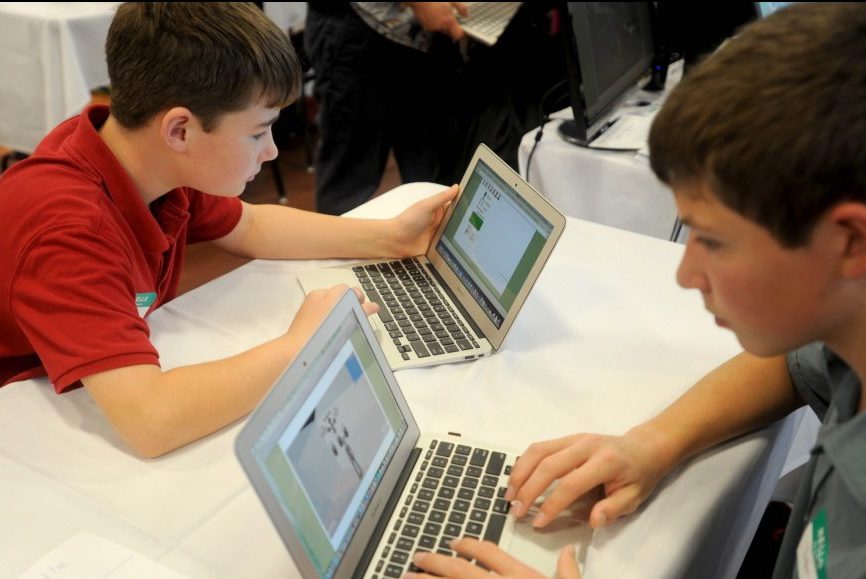Jobs in almost all fields will require proficiency by the time today’s youths enter the workforce.
Not too long in the future, almost all jobs will require some fundamental skill with computing, and many of the best new jobs will require a mastery of it. Yet computer science remains a subject on the periphery – if it is covered at all – in most Maine high schools, where students should be getting their first taste of this high-opportunity field.
School officials throughout the state, then, should be looking hard at a new initiative that is training teachers to integrate computer science into curricula – helping students build the skills to compete for the jobs of the 21st century. Two statewide groups – Educate Maine and the Maine Mathematics and Science Alliance – are working with Code.org, a national nonprofit interested in expanding computer science education. This summer, the first class of 35 middle- and high-school teachers representing a wide range of subject areas will receive training – and ongoing support – to bring computer science programming to their schools. The plan is to educate a new class every year in order to build Maine’s capacity for computer education.
Students will need this foundational learning as they enter the workforce, as computer literacy becomes necessary for work in almost all fields, and technology becomes more and more integrated into industries like health care.
What’s more, computer science graduates are and will continue to be in high demand, and students are much more likely to major in the subject in college if they have had some exposure earlier on.
Those computer science majors will graduate into a seller’s market. There are three jobs for every computer science graduate now – about half a million open positions, with a million expected by 2020. In Maine, there were more than 1,000 open positions as of February, with an average annual salary of $76,323.
Yet there is not enough being done to prepare people for those jobs. Seventy-one percent of new science, technology, engineering and technology jobs are in computing, but only 8 percent of STEM grads are in computer science.
That deficit starts building in the K-12 system, but improvements are underway; the number of high school students taking Advanced Placement computer science nationally has doubled in the last five years.
In Maine, however, only 30 high schools offer AP computer science, just 21 percent of schools offering AP classes.
Lawmakers just passed L.D. 398 to establish a task force that over the next six to 12 months will create a statewide plan for integrating computer science into proficiency-based diplomas. That will give schools a blueprint to follow, while the Code.org initiative gives teachers the skills to bring the subject into the classroom.
School districts should fully embrace the idea that soon there will be no escaping computer science. We don’t know exactly how the jobs of tomorrow will intersect with computer science – but there is no doubt they will, and Maine students have to be ready.
Send questions/comments to the editors.



Success. Please wait for the page to reload. If the page does not reload within 5 seconds, please refresh the page.
Enter your email and password to access comments.
Hi, to comment on stories you must . This profile is in addition to your subscription and website login.
Already have a commenting profile? .
Invalid username/password.
Please check your email to confirm and complete your registration.
Only subscribers are eligible to post comments. Please subscribe or login first for digital access. Here’s why.
Use the form below to reset your password. When you've submitted your account email, we will send an email with a reset code.